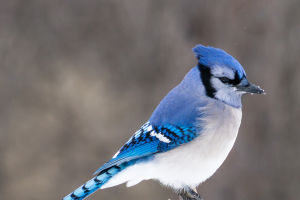Seahorses are among the ocean's most unique and captivating creatures, renowned for their distinctive features and intriguing behaviors.
Here are some fascinating facts about these remarkable marine animals.
Unique Anatomy
Seahorses belong to the family Syngnathidae and are classified under the genus Hippocampus, which translates to "horse caterpillar" in Greek. Their anatomy is unlike that of most fish; they possess an exoskeleton made of bony plates instead of scales. This gives them a rigid structure that contributes to their unique appearance. Seahorses swim in an upright position, using a dorsal fin for propulsion and pectoral fins for steering. Their prehensile tails allow them to grasp onto seaweed or coral, helping them anchor themselves in turbulent waters, which is essential for their survival.
Reproductive Behavior
One of the most extraordinary aspects of seahorse biology is male pregnancy. In this species, males carry fertilized eggs in a specialized pouch located on their abdomen. The female deposits her eggs into this brood pouch, where the male fertilizes them and carries them until they hatch. When ready to give birth, males can release hundreds of tiny seahorses (fry) in a matter of minutes. This unique reproductive strategy is rare among animals and showcases the fascinating dynamics of seahorse mating.
Diet and Feeding
Seahorses are carnivorous, primarily feeding on small crustaceans like shrimp and plankton. They lack stomachs, which means they must eat frequently—up to 50 times a day—to meet their energy needs. Their feeding mechanism is equally fascinating; they use their elongated snouts to suck in prey, functioning almost like a vacuum cleaner. This method allows them to ambush unsuspecting food items effectively.
Camouflage and Predation
Masters of disguise, seahorses can change color to blend into their surroundings, helping them avoid predators while also aiding in hunting. This ability not only protects them from larger fish and crabs but also allows them to ambush prey more effectively. Their small size and capacity for camouflage make them less visible in their natural habitats.
Life Cycle and Habitat
Seahorses inhabit shallow coastal waters, often found among seagrass beds, coral reefs, and mangroves. These environments provide ample hiding spots from predators and a rich source of food. After birth, baby seahorses face high mortality rates due to predation; it is estimated that less than one in a thousand will survive to adulthood.
Conservation Status
Seahorses are increasingly threatened by human activities such as overfishing, habitat destruction, and the traditional medicine trade, which takes millions from the wild each year. Conservation efforts are crucial for protecting these unique marine creatures and their habitats. In summary, seahorses are not only visually striking but also exhibit extraordinary biological traits that make them a subject of fascination for researchers and nature lovers alike. Their unique reproductive roles, feeding strategies, and camouflage abilities contribute to their status as one of the ocean's most intriguing inhabitants.
Facts: The Seahorse
Video by Deep Marine Scenes


